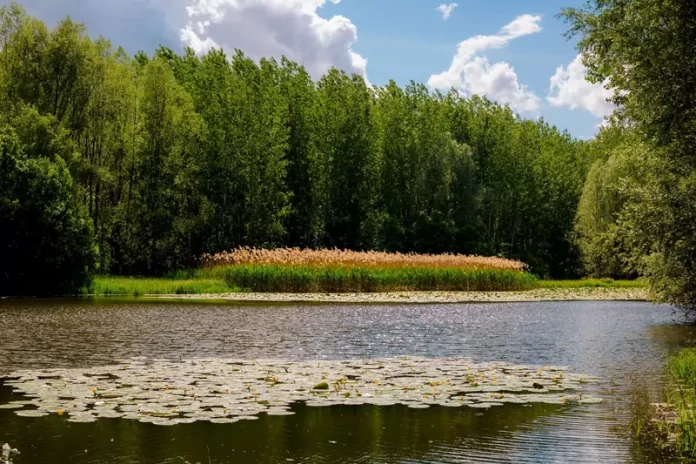Image Source: pixnio.com
Welcome to our blog! Today, we are diving into the fascinating realm where technology and nature intersect. The rapid advancements in technology have not only transformed the way we live but also how we interact with our delicate ecosystem. From climate change to species extinction, our planet is facing numerous challenges, and technology is rising to the occasion by offering innovative solutions for regeneration efforts. In this article, we will explore some of these incredible ways in which technology is supporting the revival of our ecosystem through both ecosystem analysis and forecasting.
How has technology changed the way we interact with our ecosystem?
Technology has revolutionized the way we interact with our ecosystem, bringing about both positive and negative changes. One significant impact is the accessibility of information. With just a few clicks, we can now access a wealth of knowledge about environmental issues, conservation practices, and sustainable living. This newfound awareness empowers individuals to make informed choices that have a positive impact on our planet.
Additionally, technology has allowed us to monitor and study ecosystems like never before. Through satellite imagery, drones, and sensors, scientists can collect real-time data on everything from deforestation rates to water quality. This information helps identify areas in need of immediate attention and allows for targeted conservation efforts.
Furthermore, technology plays a crucial role in raising public awareness about environmental challenges through social media platforms and online campaigns. It brings people together from different corners of the globe to share ideas, inspire action, and amplify voices advocating for change.
Moreover but not least importantly technology has opened up new possibilities in renewable energy sources such as solar panels or wind turbines – which provide clean electricity without contributing to greenhouse gas emissions.
What are some ways technology is being used to support regeneration efforts?
Technology has become a powerful tool in supporting regeneration efforts across the globe. From cutting-edge inventions to innovative applications, there are various ways technology is making a positive impact on our ecosystem.
One notable way technology is aiding regeneration efforts is through the development of renewable energy sources. Solar panels and wind turbines are becoming increasingly efficient and affordable, providing clean energy alternatives to fossil fuels. By harnessing the power of nature, we can reduce carbon emissions and combat climate change.
Another area where technology plays a crucial role is in waste management. Advanced recycling systems and waste-to-energy technologies help minimize landfill waste while generating useful resources or energy from discarded materials. These innovations not only reduce pollution but also promote sustainable practices.
Furthermore, monitoring and data analysis tools have revolutionized conservation efforts. Satellites can track deforestation patterns and identify areas at risk, allowing for timely intervention. Drones equipped with cameras provide valuable insights into wildlife populations and habitat conditions, helping scientists make informed decisions about conservation strategies.
In agriculture, precision farming techniques enabled by technology optimize resource usage while minimizing environmental impact. Sensors embedded in soil can measure moisture levels, enabling farmers to water crops more efficiently. Similarly, automated irrigation systems ensure that plants receive just the right amount of water without wastage.
Communication platforms facilitated by technology play a vital role in spreading awareness about ecological issues worldwide. Social media campaigns raise public consciousness on topics like plastic pollution or endangered species protection while connecting individuals passionate about environmental causes.
As advancements continue to unfold, it’s important to acknowledge potential risks associated with relying solely on technology for regeneration efforts. Overreliance may lead to neglecting traditional methods or overlooking unintended consequences of certain technologies themselves – such as e-waste generated during production cycles or increased dependence on rare minerals for manufacturing purposes.
It’s clear that technology is an invaluable ally when it comes to supporting the regeneration of our ecosystem – offering solutions that were previously unimaginable!
Are there any potential risks associated with using technology for this purpose?
Potential Risks Associated with Using Technology for this Purpose
While technology has undoubtedly played a crucial role in supporting the regeneration of our ecosystem, it is important to acknowledge that there are potential risks associated with its use.
One concern is the overreliance on technology. As we become more dependent on advanced tools and systems, there is a risk of neglecting traditional methods of environmental conservation and forgetting the importance of human involvement. It’s essential to strike a balance between technological solutions and hands-on efforts from individuals and communities.
Another risk lies in the sustainability of technological advancements themselves. The production, distribution, and disposal of electronic devices can contribute to pollution and e-waste accumulation if not managed properly. To mitigate this risk, it is vital for industries to prioritize eco-friendly practices throughout their supply chains.
Additionally, privacy concerns arise when using technology for environmental monitoring purposes. With an increasing amount of data being collected through sensors and surveillance systems, ensuring the security and protection of personal information becomes paramount.
Economic disparities could widen if access to regenerative technologies remains limited or expensive. It is crucial that governments, organizations, and innovators work together to make these technologies more accessible to all communities worldwide.
Also Read: Importance of Trees: Time to Reconnect With Nature

























